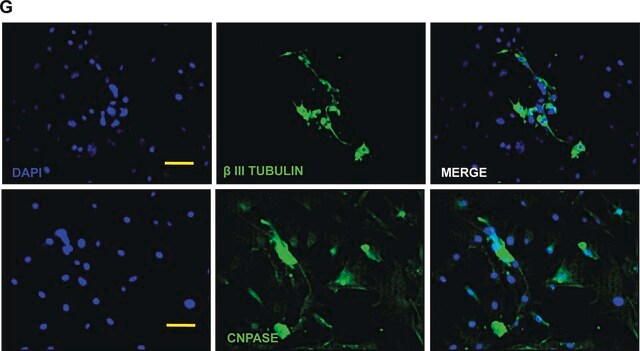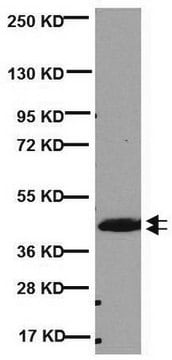C5922
Monoclonal Anti-CNPase antibody produced in mouse
clone 11-5B, ascites fluid
Sinônimo(s):
Anti-CNP1, Anti-HLD20
Selecione um tamanho
R$ 3.276,00
Selecione um tamanho
About This Item
R$ 3.276,00
Produtos recomendados
fonte biológica
mouse
Nível de qualidade
conjugado
unconjugated
forma do anticorpo
ascites fluid
tipo de produto de anticorpo
primary antibodies
clone
11-5B, monoclonal
contém
15 mM sodium azide
reatividade de espécies
mouse, rat, bovine, canine, pig, human, rabbit, sheep
não deve reagir com
guinea pig, chicken
técnica(s)
immunohistochemistry: suitable using brain sections
indirect ELISA: suitable
microarray: suitable
western blot: 1:500 using fresh bovine brain extract
Isotipo
IgG1
nº de adesão UniProt
Condições de expedição
dry ice
temperatura de armazenamento
−20°C
modificação pós-traducional do alvo
unmodified
Informações sobre genes
human ... CNP(1267)
mouse ... Cnp(12799)
rat ... Cnp(25275)
Categorias relacionadas
Descrição geral
The enzyme isolated from mammalian brain is primarily a mixed dimer of approximately 94 kDa. The dimer consists of a varied proportion of CNP1 (46 kDa) and CNP2 (48 kDa) subunits in various species. The high levels of CNPase observed in oligodendrocytes and Schwann cells portend a vital role of this enzyme in the normal function of these cells. They are distinguished from nearly all other cells by their ability to synthesize and maintain vast amounts of multilamellar membrane, known as myelin. It seems very likely that CNPase is expressed at high levels in these particular cells to facilitate the elaboration and maintenance of myelin or to carry out functions imposed or afforded by the unique membrane structure of myelin. Since the enzyme is a myelin-associated enzyme, it is of considerable interest in the study of diseases and disorders in which myelin is affected, such as multiple sclerosis, subacute sclerosing panencephalitis, acquired immunodefi ciency with CNS involvement, peripheral neuropathies, etc. Another important use is the study of reinnervation of the neuromuscular junction and the identification of oligodendrocyte progenitor cells, very early in postnatal development.
Especificidade
Imunogênio
Aplicação
Exoneração de responsabilidade
Não está encontrando o produto certo?
Experimente o nosso Ferramenta de seleção de produtos.
recomendado
Código de classe de armazenamento
11 - Combustible Solids
Classe de risco de água (WGK)
WGK 1
Escolha uma das versões mais recentes:
Certificados de análise (COA)
Não está vendo a versão correta?
Se precisar de uma versão específica, você pode procurar um certificado específico pelo número do lote ou da remessa.
Já possui este produto?
Encontre a documentação dos produtos que você adquiriu recentemente na biblioteca de documentos.
Active Filters
Nossa equipe de cientistas tem experiência em todas as áreas de pesquisa, incluindo Life Sciences, ciência de materiais, síntese química, cromatografia, química analítica e muitas outras.
Entre em contato com a assistência técnica








